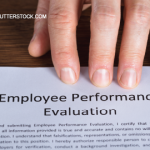Feedback Tips
Sara Melita, MS, an executive coach and consultant who works with organizations including George Washington University, discussed ways to influence people and give feedback. People can exert influence through logical, emotional or cooperative appeals, she said, referring to a white paper from the Center for Creative Leadership.1
“The best leaders combine all three,” she said. “That’s really how you influence.” You might also have to adjust to someone’s preference, putting aside your strength of appealing to logic and instead appeal to someone’s emotion.
For example, if you’re trying to get a faculty member to take on a mentee, a logical appeal might involve saying, “You’re the most qualified person for the job.” For an emotional appeal, in contrast, you might say, “Wouldn’t it be nice to give back after having had so many good mentors in your own career?”
Simply having employees who come from a variety of cultures doesn’t mean your organization is culture sensitive.
When giving feedback, Ms. Melita said, use protocols, including first asking whether it’s a good time and location to provide input. Also, she said, use “I,” not “you.” Try to avoid saying “always” or “never” because they are too absolute. Allow emotions to enter, but in moderation. Use the word “when” rather than “because.” Make sure you describe the behavior in question very clearly. And remain ready, if appropriate, to suggest alternative behaviors that might have worked better.2
She also said leaders should seek their own feedback and be deliberate when learning on the job. “Just being better [at receiving] feedback will help your learning agility,” she said. “We do not all learn at the same rates and in the same ways. You can learn more than others. So you want to be [someone] who’s learning the most.”
Also learn from things that go well, she said.
“The next time something really good happens, sit back and think, ‘What did I do? What worked? What do I need to make sure I do it again?’” she said. “Don’t be one of these people who only studies their failures.”
Thomas R. Collins is a freelance writer living in South Florida.
References
- You can master the 3 ways to influence people. Center for Creative Leadership. (n.d.).
- Grigsby RK. Enhancing the behavioral science knowledge and skills of 21st-century leaders in academic medicine and science. J Organ Behav. 2015 Jun 3;35(1–2):123–134.



